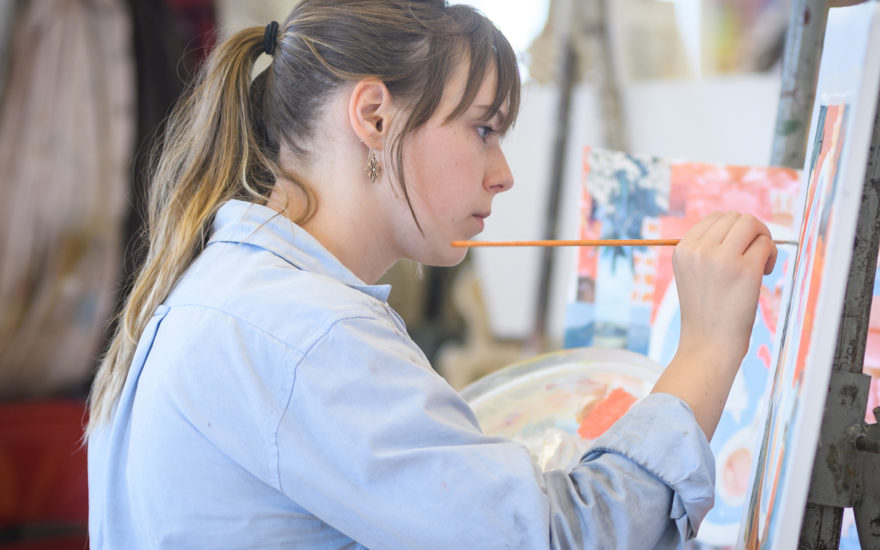Clark studio art majors greatly appreciate anchoring their art studies in a broad liberal arts curriculum, recognizing that a good artist is a good thinker and an engaged citizen. Here you can make connections across disciplines and learn how to use “visual language” to express your ideas, make social commentary, effect change, or celebrate beauty. Students also enthusiastically participate in the cultural life of the campus, city, and region.
Courses in the studio art major offer you an opportunity to engage in the study and practice of visual language. Since art is a way of communicating human experience, you learn both to read this language and to visually represent your own ideas. Training in artistic methods and media is provided in the context of intellectual inquiry and critical analysis.
If your only major will be studio art, you will take 11 studio art courses and three art history courses. If you decide to double-major, eight studio art courses and two art history courses are required.
You begin the major by taking Visual Studies: 2D Design and Color and/or Drawing: Eye, Mind, Hand. These foundation courses introduce you to the nature of visual language and the creative process while encouraging the development of visual expression. After exploring various media, you may concentrate in one area and seek out particular faculty members for personal mentoring. Areas of specialization within studio art include drawing, painting, graphic design, photography, printmaking, and sculpture. You also can study video production, set design, and lighting through related courses in screen studies and theatre arts.
The capstone course for the major, Studio Topics, offers you the opportunity to demonstrate your expertise with an independent project, guided by a faculty member.


